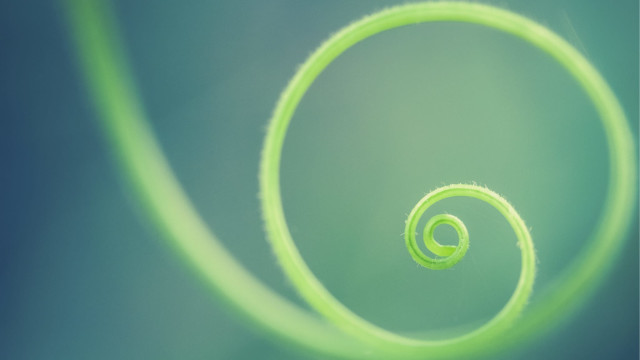What's Your Meditation Style?

Meditation involves the process of reflection, contemplation, practice, and cultivation to better familiarize yourself with your mind. Meditation teacher and Reiki practitioner Almeiri Santos describes the process as an opportunity to let “your consciousness experience itself with no attachment to time.”
Everyone’s approach to meditation differs because the practice reflects a range of different styles predating ancient history. Regardless of the technique, meditation is often used as a tool to help accomplish one or a combination of these benefits:
- Expanding awareness to better understand reality without preconceived notions, decreasing the risk of reactivity.
- Strengthening focus to better savor the present moment and silence mind chatter.
- Achieving higher states of consciousness to establish compassion, and a spiritual connection with yourself, life, and all living beings.
Picking a Practice: Guided or Self?
Some people prefer guided-meditation, and for teachers, monks, or individuals with an advanced practice, self-meditation may work better. “It is a matter of preference depending on the context, intention, and yet both can be of equal value,” says David Vago, Ph.D., a research associate professor at Vanderbilt University and research associate at Brigham & Women’s Hospital, Harvard Medical School.
Guided meditation best helps individuals beginning to establish a practice because of the ability to work with a teacher in identifying and sustaining a personalized routine. It is also a great option for teachers, monks, or advanced practitioners using meditation to accomplish a specific goal, as in yoga nidra.
Self-meditation involves any meditation technique independently practiced, which can be learned after directly working with a teacher. “They will most likely teach you how to be self-sufficient,” says Morena Escardo, meditation teacher, and holistic health coach.
While self-meditation offers fewer external distractions, it is more vigorous so it’s important for beginners to try guided meditation as they learn to establish a practice. “Until you reach a point in your practice where guidance is no longer needed, guidance can be very helpful for initial learning, to foster direction, and help decrease distractibility, boredom, or fatigue,” Vago says.
The Anatomy of a Meditation Teacher
Roundglass meditation teacher and Buddhist monk, Nithya Shanti began his meditation journey at the age of 16, after being introduced to the benefits of meditation during a three-day silent meditation retreat. “I noticed through-out my day that I was much more aware and much more alert. There was a general sense of calm and serenity that was much more accessible and my concentration improved,” Shanti says.
By sitting quietly and becoming aware of his breath, Shanti began to learn how to focus his mind. This experience inspired Shanti to attend more retreats as meditation slowly became an integral part of his life. After about 8 years, Shanti left his corporate job and became a Buddhist monk where he was introduced to the practice of Mahasati.
This open-eyed practice is a dynamic form of meditation that involves slow rhythmic hand movements. It is based on the teaching of Luangpor Teean Jittasubho, a Thai businessman turned monk who travelled through Asia teaching this mediation style for the latter half of the 20th century.
“I’ve noticed for some people who really struggle with meditation this practice really does it like nothing else,” Shanti says. Unlike traditional meditation, your eyes must remain open through out because the practice focuses on building awareness and alleviating suffering, regardless of your external circumstances.
Addiction Recovery Expert and Mindfulness Teacher Valerie (Vimalasara) Mason-John’s relationship with mindfulness began during her time at a juvenile detention center. She used meditation to cope with solitary confinement as a teen, but it wasn’t until her late twenties that she discovered meditation and mindfulness was her higher calling. Since being ordained into the Triratna Buddhist Community, Mason-John has used her lived experiences, coupled with her learned expertise to help individuals begin to heal from trauma and addiction, as well as cope with intense feelings of stress and anxiety.
"I know all of these feelings and emotions well, I went through years of abuse and struggles with addiction, I hated to catch even a glimpse of myself in the mirror,” Mason-John says. In her Mindfulness Based Addiction Recovery (MBAR) program, and Eight Step Recovery: Using the Buddha’s Teaching to Overcome Addiction program, Mason-John incorporates Buddhist teachings and mindfulness through traditional meditation to help patients identify and cope with their emotions.
Her course, Detox Your Heart of Anger, Fear, and Hatred may be an option for individuals looking to use guided meditation as a tool to heal from trauma, establish unconditional self-compassion, or to better cope with stress and anxiety in order to remain sober. “In my course, what we are learning to do is become aware of what happens to the body when stress is arising. That [knowledge] can give us the gap and pause to do something different,” Mason-John says.
Mason John’s Roundglass course on Detoxing Your Heart of Anger, Fear, and Hatred offers guided meditations that can help maintain sobriety, heal from deep-rooted trauma, or process intense feelings of anxiety and stress.
Mindfulness teacher Vishvapani Blomfield educates a variety of professionals and prison inmates across the U.K. about meditation. A member of the Triratna Buddhist Order since the age of 14, Blomfield’s meditation style focuses on pranayama. “The breath is that link to our capacity to settle ourselves. It’s a link to the body,” Blomfield says.
Having worked extensively in prison and probation hostels, Blomfield often asks what his students’ experience with mindfulness is. “This young guy said that [meditation] was the first time in his life he’d experienced a sense of peace,” Blomfield says.
We use 20 percent of our brain to breathe so for Blomfield, teaching pranayama meditation allows individuals to develop a practice of familiarizing yourself with a subconscious action. In doing so, the brain and body learn how to flow and release, which is especially beneficial for people with a tendency to hold on to emotional baggage such as anger, attachments, or resentment. “We may notice we have habits of holding on so an attitude we can bring is letting the breath just flow,” Blomfield says.
When teaching pranayama, Blomfield asks his students to be less critical of their breath by focusings on the actual breath, rather than how to breathe. “Rather than thinking about how we ought to breathe — and we can easily have ideas that we are doing this wrong — we can start with just getting to know the breath, exploring how it feels,” Blomfield says. Over time, students can use pranayama as a tool to navigate feelings of anxiety or stress at work, home, or when going about day-to-day life.
Join mindfulness teacher Vishvapani Blomfield in this live session, Beyond Breathing: Finding the Breath, to develop greater awareness of breath in a guided meditation you can extend to your own practice.
Time to Meditate?
It’s important to remember that meditation isn’t one size fits all. One of the longest and most exhaustive ongoing studies conducted by The ReSource Project regarding the impact of three mindfulness training styles on a variety of participants, found that each technique varied in effect on an individual’s emotional and cognitive well-being.
What works to calm the mind of your partner may induce different results in you, so it’s important to be patient with yourself as you try different techniques to see what best resonates with finding your joy and center.
“If you truly want to commit to your meditation practice, find a teacher you like and really resonate with, and study with them directly,” Escardo says. For those who feel more apprehensive about working with a teacher, try blocking out some time — as little as five to ten minutes — to meditate each day. Escardo suggests prioritizing that in the morning. “I like meditating first thing in the morning to get it out of the way; you’re more likely to find excuses not to do it if you leave it for later.”
Whether you’re looking to Awaken a Compassionate Mind or Spark Vibrant Energy, browse through Roundglass courses and classes as you move along your meditation journey.
Header Photo: The Good Brigade/DigitalVision/Getty Images
Key Takeaways:
- Environment plays a part in a regular practice.
- Block out time to meditate each day.
- Find a teacher that you resonate with.










